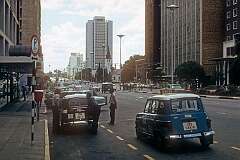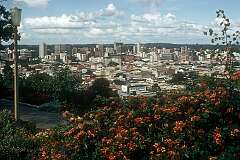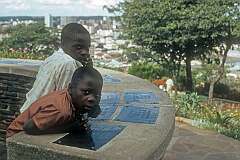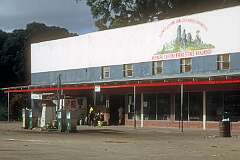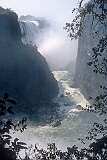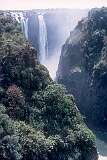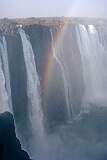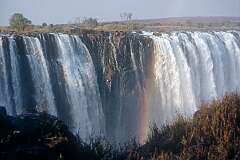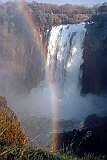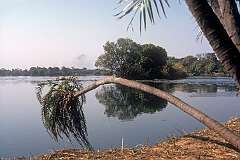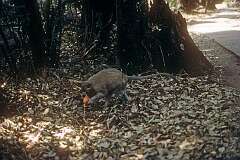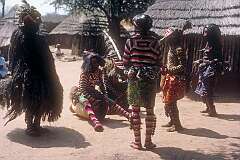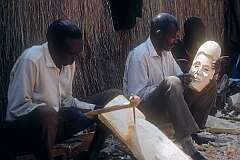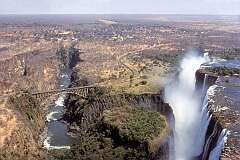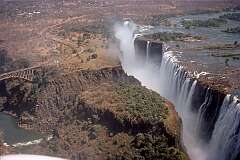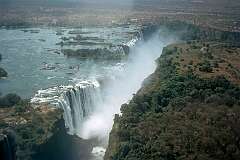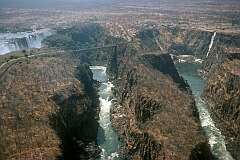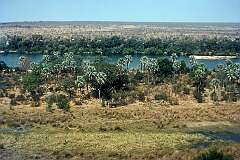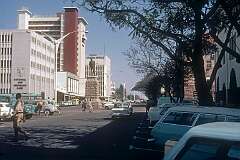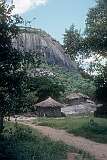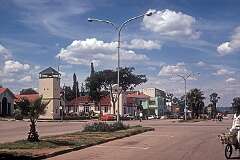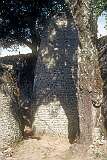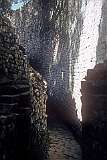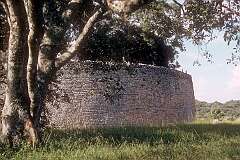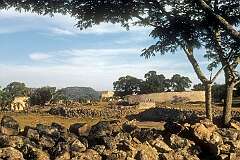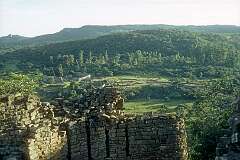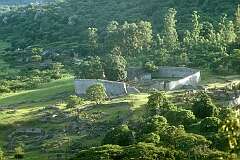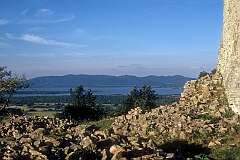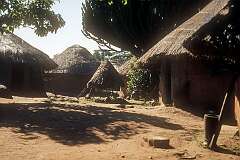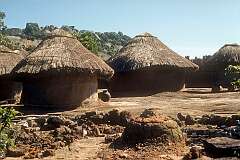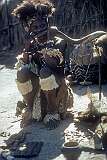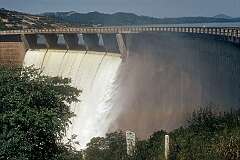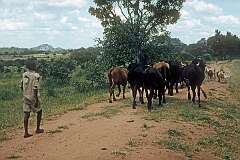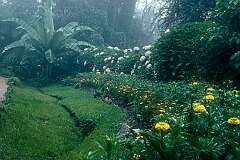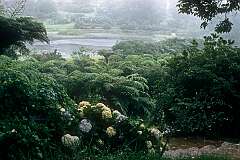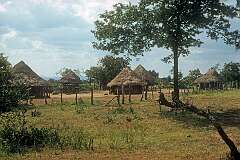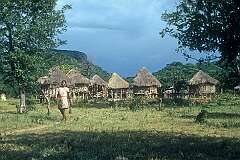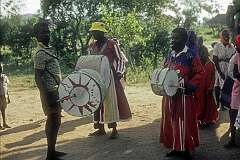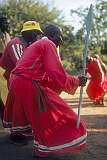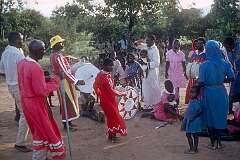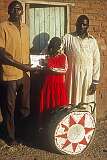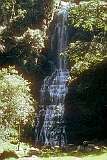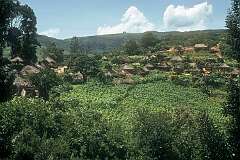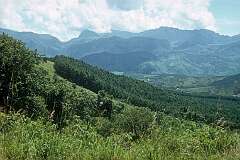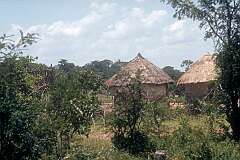Zimbabwe in 1970-1975
28-30 August 1970 and 10-14 January 1975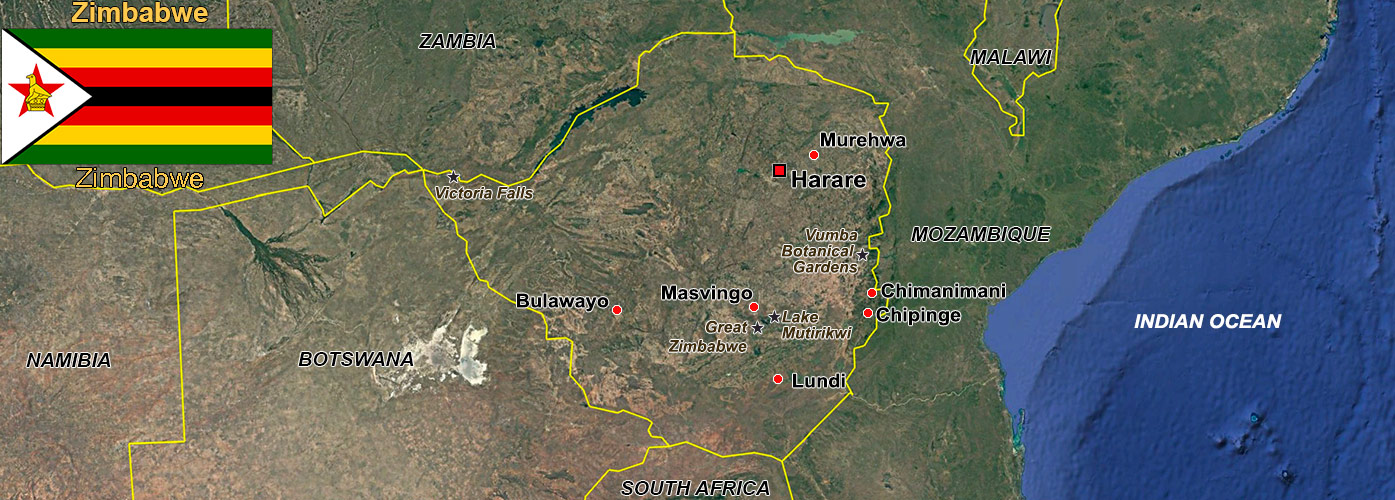
The Republic of Zimbabwe, located between the Zambezi and Limpopo Rivers in Southeastern Africa, was settled by Bantu peoples approximately 2,000 years ago. The BaKalanga Shona people constructed the city of Great Zimbabwe (meaning "Great House of Stone") in the 11th century; by the 13th century, it had become a major African trade centre. It declined in the 15th century, likely due to environmental degradation. A Shona warrior prince from the royal family founded the Mutapa Empire, known as Mwenemutapa (Monomotapa), which expanded well into present-day neighbouring countries. Another Shona state was the Rozvi Empire; in the late 1830s, this state was invaded by Mzilikazi, a former general under Shaka Zulu who broke away with his Nguni people and founded the Ndebele Kingdom (Matabeleland) in 1840, around his capital, Bulawayo (meaning "Place of Killing").
In the late 19th century, the British South Africa Company of the mining magnate Cecil Rhodes conquered Mashonaland and, later, Matabeleland, expecting to exploit mineral wealth; they demarcated "Zambesia", later called "Rhodesia" by British settlers. Northern Rhodesia, north of the Zambesi River became Zambia in 1964, while from there on Southern Rhodesia, as a self-governing British colony, became "Rhodesia". It declared unilateral independence in 1965 under an internationally unrecognised white government, renaming itself "Zimbabwe-Rhodesia" in 1979. However, after elections in 1980, it received internationally recognised independence as the Republic of Zimbabwe, with Robert Mugabe as its first president.
These photos were taken in 1970 and 1975, when the country was the unrecognised Republic of Rhodesia under Ian Smith, and its capital was called Salisbury, renamed Harare in 1982.
In the late 19th century, the British South Africa Company of the mining magnate Cecil Rhodes conquered Mashonaland and, later, Matabeleland, expecting to exploit mineral wealth; they demarcated "Zambesia", later called "Rhodesia" by British settlers. Northern Rhodesia, north of the Zambesi River became Zambia in 1964, while from there on Southern Rhodesia, as a self-governing British colony, became "Rhodesia". It declared unilateral independence in 1965 under an internationally unrecognised white government, renaming itself "Zimbabwe-Rhodesia" in 1979. However, after elections in 1980, it received internationally recognised independence as the Republic of Zimbabwe, with Robert Mugabe as its first president.
These photos were taken in 1970 and 1975, when the country was the unrecognised Republic of Rhodesia under Ian Smith, and its capital was called Salisbury, renamed Harare in 1982.




